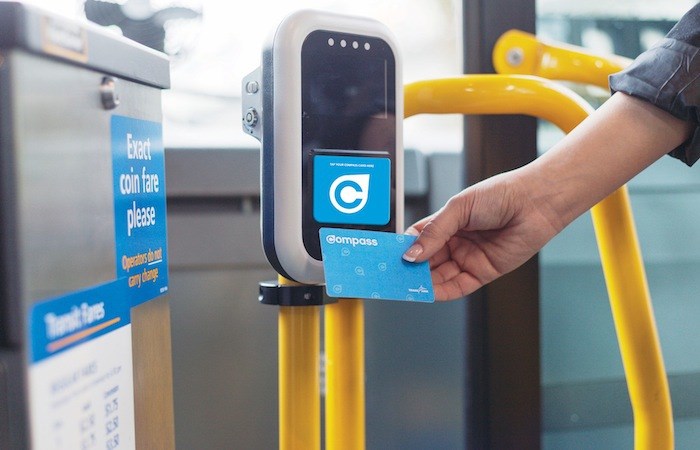TransLink is switching to a one-zone charge at all times on buses as the solution that will allow it to roll out its long-delayed Compass card to the rest of the transit system.
It means a more than 30% price break for regular riders who must now pay for two or three zones on certain bus routes that cross zone boundaries.
TransLink will also abandon the planned tap-out requirement on buses.
That was a major headache for launching the smart card payment system because tests found many passengers forgot to tap out on buses and were then charged the maximum three zones when they only travelled one.
Bus service also stood to be crippled on busy routes if every exiting passenger had to tap out, a scenario that would have been worsened by slow detection rates by the Compass readers on buses.
The change also addresses the fact bus riders on two- and three-zone routes would have been able to cheat the system and pay only one zone by tapping their card on the exit reader early without leaving.
The end of the multi-zone system only applies on buses — not SkyTrain, SeaBus or West Coast Express, whose passengers will still have to tap out.
Multi-zone bus routes are relatively scarce; three routes span three zones and 42 cross two zones, and 80% of bus riders only move within one zone and won’t see any savings.
Still, there are concerns that the elimination of two- or three-zone bus fares may result in worse bus congestion on certain routes. Buses that cross bridges like the Ironworkers Memorial or Port Mann will suddenly be cheaper to take than boarding a SeaBus or SkyTrain.
Cathy McLay, TransLink’s chief financial officer and the incoming acting CEO, denied TransLink is projecting any drop in revenue from the end to two- and three-zone bus fares.
“We think it will all balance out,” she said, citing projections of increased ridership.
But McLay was unable to say whether or how TransLink will put on more buses on routes that could see higher volumes.
“Unfortunately, with the No [win in the transportation] plebiscite, there is no increase in transit services.”
The changed bus fare system is billed as temporary pending a fare policy review and potential consideration of a move to distance-based transit pricing over the longer term.
There are no plans to increase one-zone bus fares, McLay said.
TransLink says it will begin activating Compass vending machines in stages at SkyTrain stations and SeaBus terminals. They’ll initially sell single-use Compass tickets but actual Compass cards will be available via the machines by late October — and by November in retail outlets, walk-in centres and by mail for those ordering online or by phone.
As for when fare gates will begin to close and secure the system, that could be months longer as TransLink waits for riders to use up pre-paid FareSaver tickets, which will no longer be sold next year.
The base Compass fares will be the same as FareSaver pricing, with options for passengers to buy other options like a day or month pass.
One downside to abandoning the tap-out on buses is TransLink will lose some of the benefit it was counting on from the smart card system — accurate locations and times of the start and end of each trip so planners can more precisely match route service levels with demand. But Compass program vice-president Lloyd Bauer suggested much data gathered from Compass card use will still be useful because analytic systems can infer where passengers exit in many cases.
Bus passengers have long paid only one-zone fares at off peak times after 7 p.m. weekdays and on weekends and holidays.



